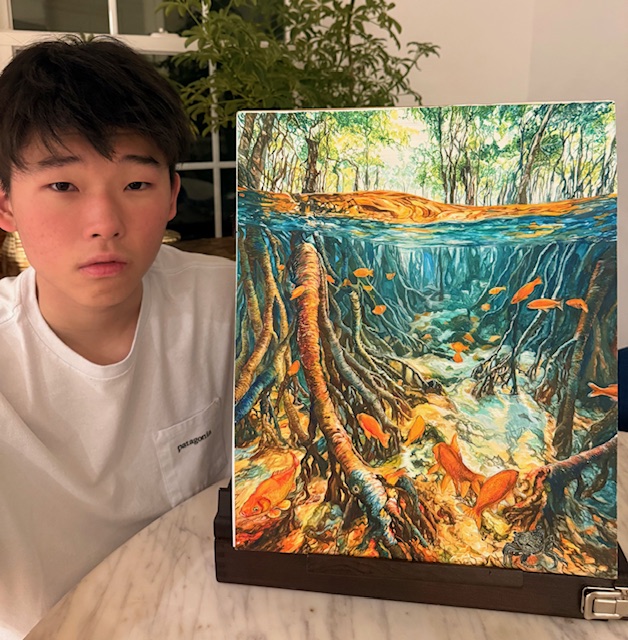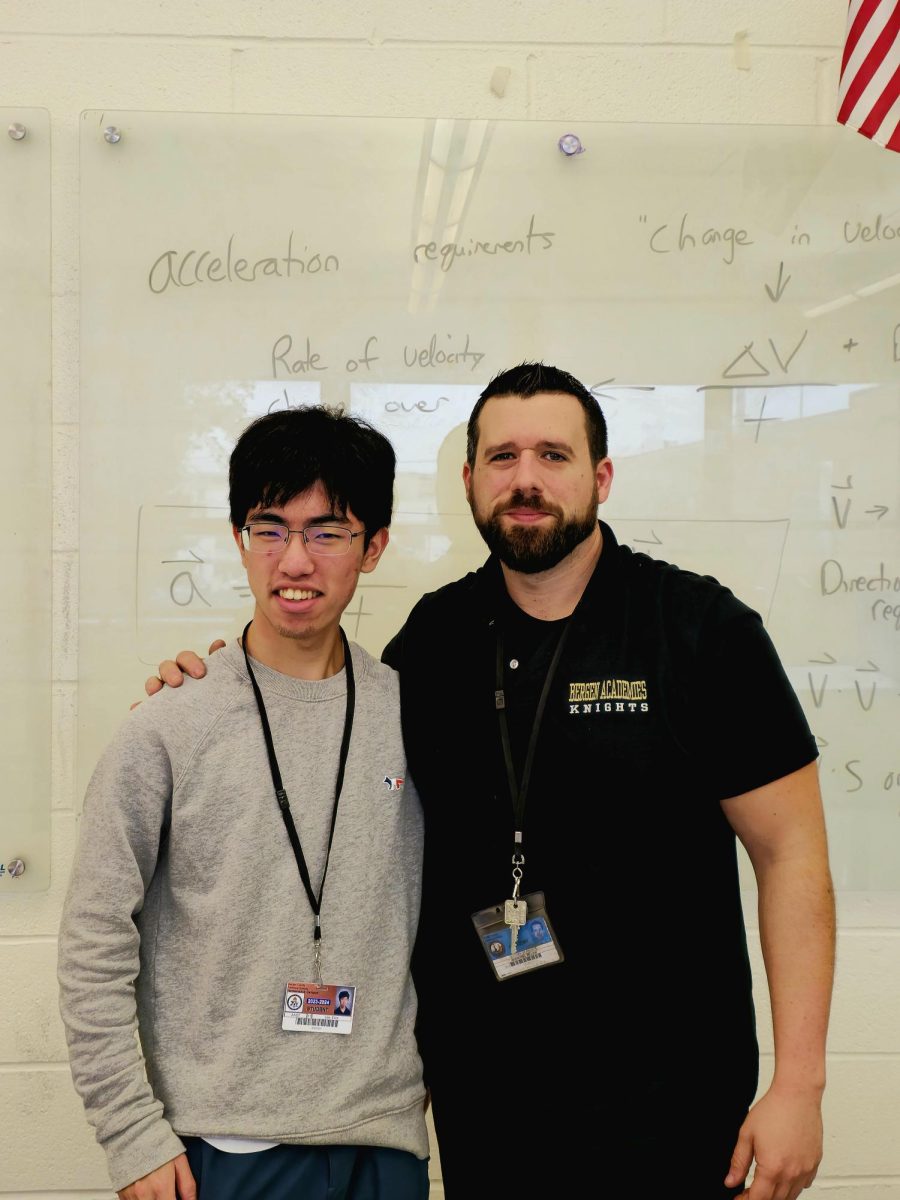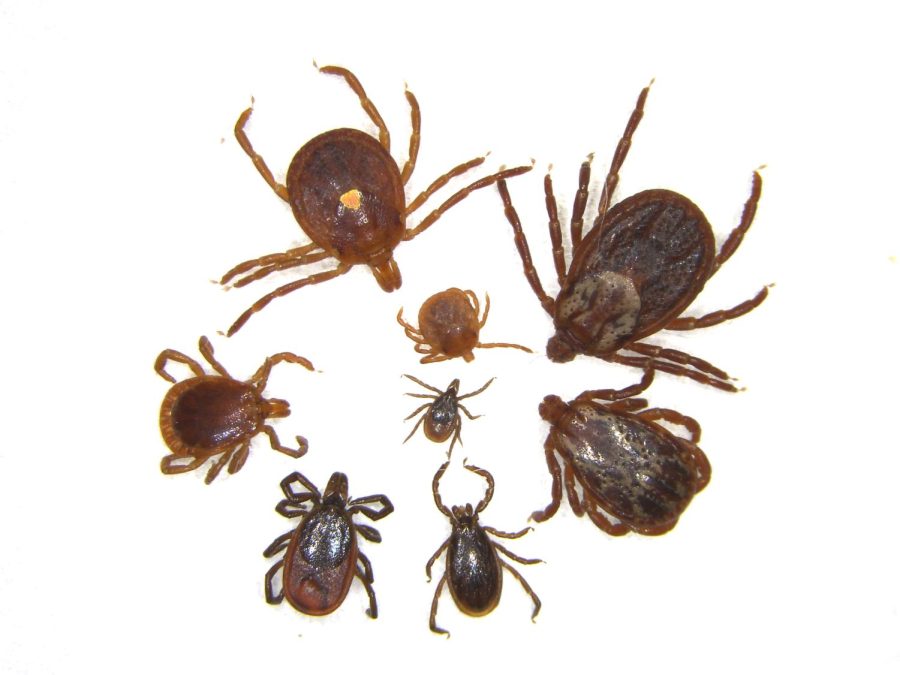Daniel Yu, a junior in the science academy at Bergen County Academies, has earned international recognition as a winner of the 2025 Science Without Borders® Challenge. This annual global art competition combines science and creativity. Organized by the Khaled bin Sultan Living Oceans Foundation, the contest invites students from around the world to raise awareness about ocean conservation through their artwork.
This year’s theme, Marine Keystone Species, challenged participants to highlight species that play a disproportionately large role in maintaining the health and stability of marine ecosystems. More than 1,300 students from 75 countries submitted original artwork, showcasing a diverse range of subjects, including hammerhead sharks and brain corals, as well as sea otters and sea stars. But among all the finalists, Daniel’s piece stood out not only for its technique, but also for its subject.
Instead of choosing an animal, Daniel focused on an often overlooked marine powerhouse: the mangrove tree. “I was kind of surprised that I won,” Daniel said. “A lot of the other artworks were impressive and I didn’t think I would place at all.”
Keystone species are organisms that have a large impact on their environment relative to their population size. If a keystone species disappears, the consequences can cause entire ecological systems to crumble.
While many contestants focused on animals, Daniel took a different route. “I think I was the only semifinalist who chose a plant as the main organism,” he said. “That made it feel unique.”
Daniel’s fascination with mangroves wasn’t born in a science class or a lab. Instead, it started in childhood, with a nature show. “I remember seeing mangroves on an episode of Wild Kratts years ago,” he said. “They’re such an interesting species. I don’t think many people would think to draw a tree, especially one that grows in water.”
That early spark stayed with him. When the contest prompt asked students to represent marine keystone species, the memory resurfaced instantly. “Mangroves came to mind right away,” he said. “They’re not flashy, but they’re essential.”
Though they may not swim or sing, mangroves are ecological giants. These salt-tolerant trees grow in tropical and subtropical coastal areas and act as the foundation of their ecosystems. Their roots stabilize shorelines, prevent erosion, and create habitats for countless marine organisms. Juvenile fish, crustaceans, mollusks, and even birds rely on mangrove forests for protection, breeding, and feeding.
“They’re not just interacting with one organism,” Daniel explained. “They are the structure—the home—for so many species. They create shelter and shadow, and they even shape the water flow and sediment. I wanted to express that complexity.”
To bring his vision to life, Daniel dedicated four months to the painting process, which is an impressive feat, especially considering his demanding academic workload. Using watercolor, a delicate and unforgiving medium, he began by carefully sketching the twisted roots and branches of mangrove trees. His reference material mainly came from online images and scientific articles, which helped him construct a scene that was both biologically accurate and visually appealing.
“I wanted to show how deep and mysterious these forests can be,” Daniel said. “They feel almost like tunnels underwater, with light filtering down in rays. That was the vibe I was going for.”
To enhance that underwater atmosphere, he layered shades of green, brown, and blue, adding shadows and light reflections with painstaking precision. One of the most challenging elements, he said, was capturing motion, especially of the fish.
“The movement of the fish was hard,” he said. “I had to make sure each fish had different brush strokes to show how they were swimming. That part took a lot of effort.” He also included crabs and snails crawling among the roots, emphasizing the rich biodiversity that mangrove forests nurture.
Even so, he still finds time to sketch when he can, and this project reminded him of how much he enjoys it. This contest also marked the first time Daniel had ever combined science and art, but it likely won’t be the last. Looking ahead, he hopes to pursue engineering, a field that he believes can benefit from artistic insight.
When asked what advice he’d give to other students thinking about entering the Science Without Borders® Challenge, Daniel had this to say: “Just have fun with it. You learn a lot while researching and you’ll probably discover some species you’ve never even heard of before.”
In choosing a quiet species with a loud impact, Daniel reminds others that beauty, strength, and importance in nature are not always obvious. Sometimes, they lie just beneath the surface—rooted in still water, holding everything together.







